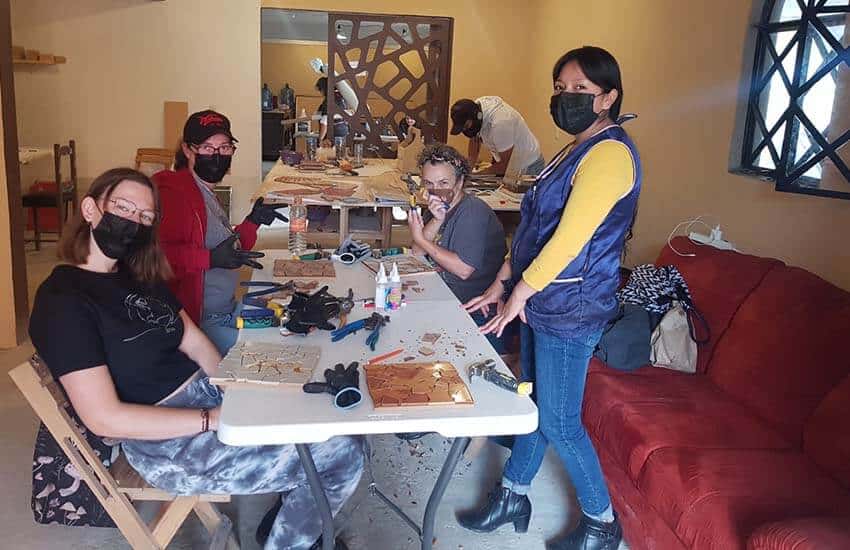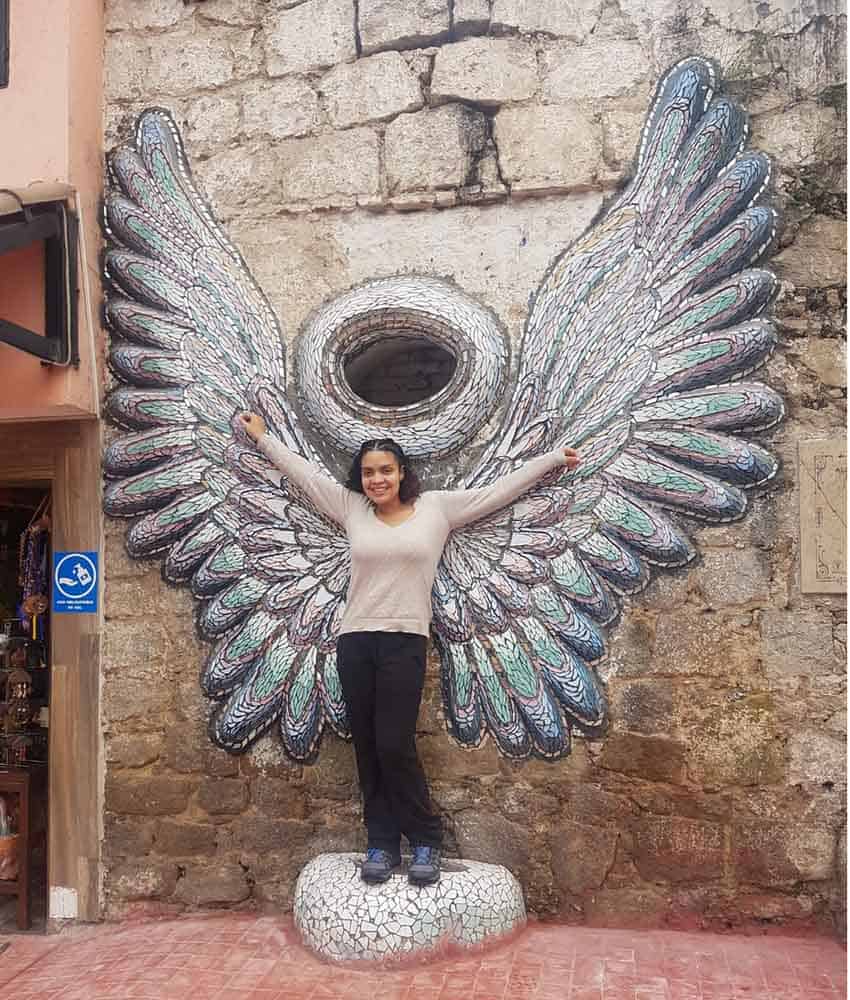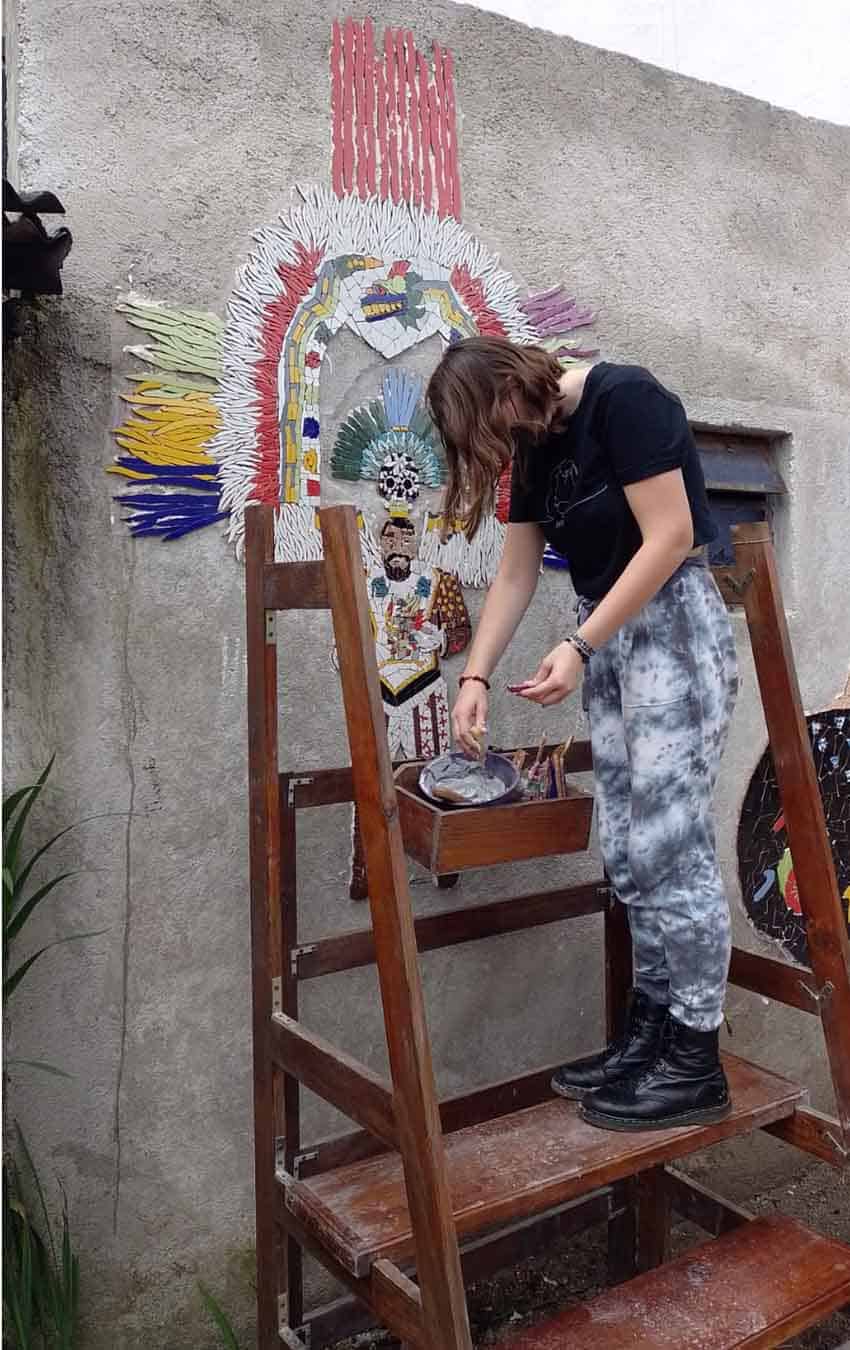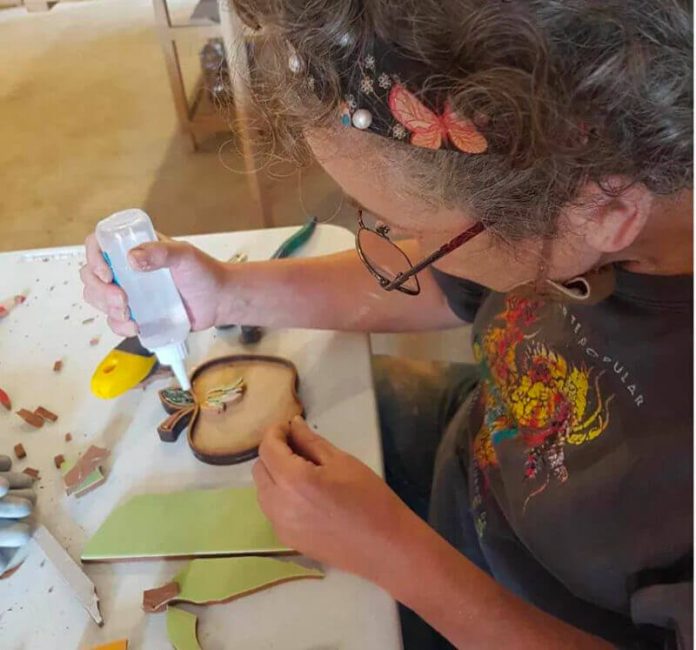If you follow my column, you know that I have developed quite an interest in recycled mosaic art. I used to be a quilter back in the day, but the eyes don’t let me do that anymore. Arranging tile “scraps” satisfies the same urge to upcycle the worthless into the beautiful.
Oddly enough, despite tile being ubiquitous in Mexican construction, as an artistic medium it is almost entirely unknown. (To be fair, Diego Rivera and some other artists have worked with it in the past.)
Today, there are several artists working with broken tile pieces, a technique called trencadís. I have found three community-based programs in different parts of Mexico that only now know of each other’s existence. They all engage locals in designing, breaking and placing tiles onto walls, benches, fountains and more.
But despite all the tile and pottery odds and ends that exist and the creativity that seems to surround us here in Mexico, trencadís is a niche that has not been adequately exploited.
In two of the locations that have programs — Zacatlán, Puebla, and Puerto Vallarta — the murals have become something of a tourist attraction. This may seem more obvious in a place like PV, but Zacatlán also attracts many weekenders, offering a cool mountain respite from urban life, complete with a gorgeous ravine and various small waterfalls.

So I thought to myself, is there a niche tour here for people interested in learning about such art in such a beautiful place? Would foreigners living in Mexico City be interested in it, especially with linguistic support?
Well, there is one way to find out: I spoke to Maricarmen Olvera, the head of Casa de Vitramuralista (the organization now behind community mural-making in Zacatlán) about doing a type of “dry-run,” bringing several of my friends up to Zacatlán, taking advantage of their five-hour workshop, murals in progress and the beautiful town.
Three friends decided to go with me last weekend. The goal was not to gauge economic viability but rather to figure out what such participants would want and not want. The idea was three days:
Friday was for touring the town and the murals with an emphasis on how the community’s artwork has evolved over more than seven years. Saturday was for the five-hour workshop on basic trencadís skills, culminating in a small item that the participant could take home. On Sunday, we worked on selected sections of murals to leave our mark permanently on the town.
What did I learn? Number one, it rains a lot in Zacatlán at this time of year, so a minimum of two pairs of shoes are necessary. We got caught in the rain at the tail end of viewing murals, and one participant had wet shoes for the rest of the weekend.
More importantly, I realized that doing both the workshop and a significant amount of work on walls is too much for those only curious about the murals and how they are made. The workshop was pretty intense, but people were happy with what they made.

On Sunday, most were happy to break and put a few tiles up, but then got bored. I, on the other hand, got “into the zone” and filled in a good chunk of space. Others decided they were hungry and took off for several hours.
Everyone loved the town and loved the getaway from the city. All were impressed with what Olvera and the people of Zacatlán have accomplished. It did not necessarily mean they wanted to get into this artistic activity.
My thought at this time is to cut the general tour to Zacatlán to two days, showing the murals and doing the general workshop. If there is interest, we can offer a trip focusing on one or more murals in progress.
I should also admit that I hope to recruit people for a similar project I am starting in Mexico City. I can’t imagine a city with more “junk” to salvage than here — and more space and interest in muralism by many average people.
We could also offer the really basic course, sending people interested in more advanced skills to Zacatlán. It will take us years to catch up with them (if we ever do).
If you are interested in any of these projects, you can contact MariCarmen Olvera for Zacatlán, in the north of Puebla; Marissa Martínez in San Luis Potosí; Natasha Moraga in Puerto Vallarta; or Leigh Thelmadatter (me) at thelmadatter@gmail.com for the start-up here in Mexico City.

Leigh Thelmadatter arrived in Mexico 18 years ago and fell in love with the land and the culture in particular its handcrafts and art. She is the author of Mexican Cartonería: Paper, Paste and Fiesta (Schiffer 2019). Her culture column appears regularly on Mexico News Daily.
